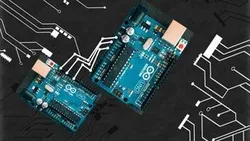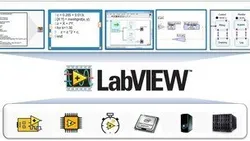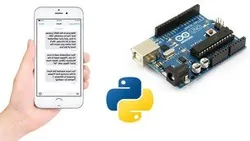
Mastering Arduino From beginners To Core Advance 
This course is designed to help beginners master Arduino from the basics to the core advanced level. It covers a wide range of topics from microcontrollers, industrial IDEs, sensors, motors, and practical projects. You will learn how to build circuits, flash lights, spin motors, make noise, sense the environment, and build a robot. With the help of theoretical knowledge and practical examples, you will be able to develop real-time projects. The course is divided into three sections: Simple Projects, Intermediate Projects, and Advanced Projects. Upon completion, you will have the skills and knowledge to create Arduino projects. ▼
ADVERTISEMENT
Course Feature
![]() Cost:
Cost:
Paid
![]() Provider:
Provider:
Udemy
![]() Certificate:
Certificate:
Paid Certification
![]() Language:
Language:
English
![]() Start Date:
Start Date:
On-Demand
Course Overview
❗The content presented here is sourced directly from Udemy platform. For comprehensive course details, including enrollment information, simply click on the 'Go to class' link on our website.
Updated in [April 24th, 2023]
This course, Mastering Arduino From Beginners To Core Advance, is designed to provide students with a comprehensive theoretical and practical knowledge of microcontrollers, industrial environments IDEs, sensors, and types of motors. Students will learn how to develop projects into real-time environments, gain a basic understanding of microcontrollers and how to run motors and sensors with PCs, and explore the Arduino framework.
The course begins with basic knowledge of Arduino and microcontrollers, followed by basic setup processes and connections. Students will then move on to running a variety of different motors, learning about sensors and high-level communication, and exploring advanced topics. The course culminates in a complete project that synthesizes many of the concepts learned throughout the course.
The course is broken up into three sections: Simple Projects, Intermediate Projects, and Advanced Projects. This allows students to progress to or start from any level based on their comfort level with Arduino. Each video lecture is designed to provide one building block of knowledge, and is followed by a hands-on exercise that encourages students to expand on that building block or combine several previous blocks. Solutions to each exercise are provided to help students learn. Additionally, most sections contain a project that challenges students to synthesize many of the concepts found in that section and from previous sections.
Upon completion of this course, students will have the skills and knowledge needed to create fun and useful Arduino projects. They will receive course videos, a course complete PDF version to download, complete codes to download and a GitHub link, and full explanations at any time by answering questions.
[Applications]
Upon completion of this course, students will have the skills and knowledge needed to create fun and useful Arduino projects. They will be able to understand the basics of microcontrollers, industrial IDEs, sensors, and types of motors. They will also be able to develop projects in a real-time environment, understand how to run motors and sensors with a PC, and have a basic understanding of communication methods such as I2C. Additionally, they will be able to apply the knowledge they have gained to create projects such as automatic gate openers.
[Career Paths]
Career Paths
1. Robotics Engineer: Robotics engineers design, build, and maintain robots and robotic systems. They use their knowledge of electronics, mechanics, and software engineering to develop robots that can be used in a variety of industries, such as manufacturing, healthcare, and defense. Robotics engineers must have a strong understanding of Arduino and its capabilities in order to create effective robotic systems. As the demand for robots increases, the need for robotics engineers is expected to grow.
2. Embedded Systems Engineer: Embedded systems engineers design, develop, and maintain embedded systems. These systems are used in a variety of applications, such as consumer electronics, medical devices, and automotive systems. Embedded systems engineers must have a strong understanding of Arduino and its capabilities in order to create effective embedded systems. As the demand for embedded systems increases, the need for embedded systems engineers is expected to grow.
3. IoT Developer: IoT developers design, develop, and maintain Internet of Things (IoT) systems. These systems are used in a variety of applications, such as home automation, smart cities, and connected cars. IoT developers must have a strong understanding of Arduino and its capabilities in order to create effective IoT systems. As the demand for IoT systems increases, the need for IoT developers is expected to grow.
4. Automation Engineer: Automation engineers design, develop, and maintain automated systems. These systems are used in a variety of applications, such as manufacturing, healthcare, and defense. Automation engineers must have a strong understanding of Arduino and its capabilities in order to create effective automated systems. As the demand for automation increases, the need for automation engineers is expected to grow.
[Education Paths]
The recommended degree paths for learners of this course are:
1. Bachelor of Science in Electrical Engineering: This degree program provides students with a comprehensive understanding of electrical engineering principles and their application in the design and development of electrical systems. Students learn about circuit analysis, digital signal processing, microprocessors, embedded systems, and robotics. They also gain knowledge of the latest technologies in the field, such as artificial intelligence, machine learning, and Internet of Things (IoT). This degree is ideal for those who want to pursue a career in the field of electrical engineering.
2. Master of Science in Computer Engineering: This degree program provides students with a comprehensive understanding of computer engineering principles and their application in the design and development of computer systems. Students learn about computer architecture, operating systems, computer networks, software engineering, and computer security. They also gain knowledge of the latest technologies in the field, such as artificial intelligence, machine learning, and Internet of Things (IoT). This degree is ideal for those who want to pursue a career in the field of computer engineering.
3. Master of Science in Robotics: This degree program provides students with a comprehensive understanding of robotics principles and their application in the design and development of robotic systems. Students learn about robot kinematics, robot dynamics, robot control, and robot vision. They also gain knowledge of the latest technologies in the field, such as artificial intelligence, machine learning, and Internet of Things (IoT). This degree is ideal for those who want to pursue a career in the field of robotics.
4. Master of Science in Artificial Intelligence: This degree program provides students with a comprehensive understanding of artificial intelligence principles and their application in the design and development of intelligent systems. Students learn about machine learning, natural language processing, computer vision, and robotics. They also gain knowledge of the latest technologies in the field, such as deep learning, reinforcement learning, and Internet of Things (IoT). This degree is ideal for those who want to pursue a career in the field of artificial intelligence.
The development trends in these degree paths are rapidly changing due to the advancements in technology. For example, the use of artificial intelligence and machine learning is becoming increasingly popular in the field of robotics and computer engineering. Similarly, the use of Internet of Things (IoT) is becoming more prevalent in the field of electrical engineering. As technology continues to evolve, these degree paths will continue to evolve as well.
Pros & Cons

Easy and fun for beginners

Good beginning

Simple and to the point language

Downloadable PDF illustrations and instructions

Good lab to get a solid understanding

Poor content and unorganized tutor

No steps to become core advance

Difficult to understand accent

Not advanced material

Poor presentation of subject matter
Course Provider

Provider Udemy's Stats at AZClass
Discussion and Reviews
0.0 (Based on 0 reviews)
Explore Similar Online Courses

Linux Operating System Fundamentals

TikTok Marketing

Python for Informatics: Exploring Information

Social Network Analysis

Introduction to Systematic Review and Meta-Analysis

The Analytics Edge

DCO042 - Python For Informatics

Causal Diagrams: Draw Your Assumptions Before Your Conclusions

Whole genome sequencing of bacterial genomes - tools and applications

Arduino Communication with SPI Protocol

Interfacing LabVIEW With Arduino via LINX


Start your review of Mastering Arduino From beginners To Core Advance